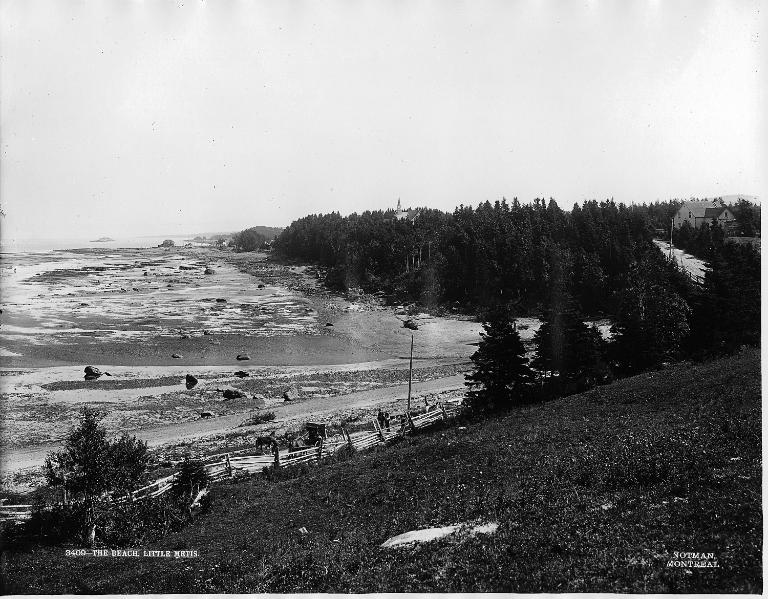Fields, Forests and the Shoreline – Pioneer Scientists at Work in Metis

Albumen Print
Beach, Little Metis, 1901
William Haggerty
Wm. Notman & Son
McCord Stewart Museum
Scientists often made Metis a stopping point on their way into the Gaspe Peninsula. Their names figure in hotel registers. Green Gables near Leggatt’s Point and other local hostelries sometimes even earned a credit in their scientific publications.
For a scientist, a few days of rest is the perfect opportunity for investigation, fleeting but often productive. The proof is found in scientific journals. When pioneer marine biologist R. Ramsay Wright from the University of Toronto (the zoology building there takes his name) found a parasitic copepod on the village’s rocky beaches, Metis was immortalized in the clam parasite’s name, Myicola metisiensis. Metis also earned a mention in academic articles as varied as “Insects that Infect Birds” (1925), “Solidago calcicola in Matane Co., Quebec” (1928), “Two Canadian Collections of Cantharellus Multiplex” (1936), “A Spruce Infecting Rust” (1937). They were all written by scientists who were visiting or en route to other parts of the region.
The unique serpentine plants in the alpine tundra of what became (in 1937) the Parc de la Gaspésie was a special attraction. Botanists Frère Marie-Victorin (author of La Flore Laurentienne) and Harvard professor Merritt Fernald inspired others to trek through the region to inventory plant populations that some suspected (erroneously it turned out) were the continent’s sole survivors of glaciation.
Probably no one in Metis got a whiff of the scientists in their midst or noticed the avid collectors working on the shoreline, fields and forests. Their specimens were packaged and sent to herbaria in museums and universities across the continent where they have been immortalized in the scientific record.

